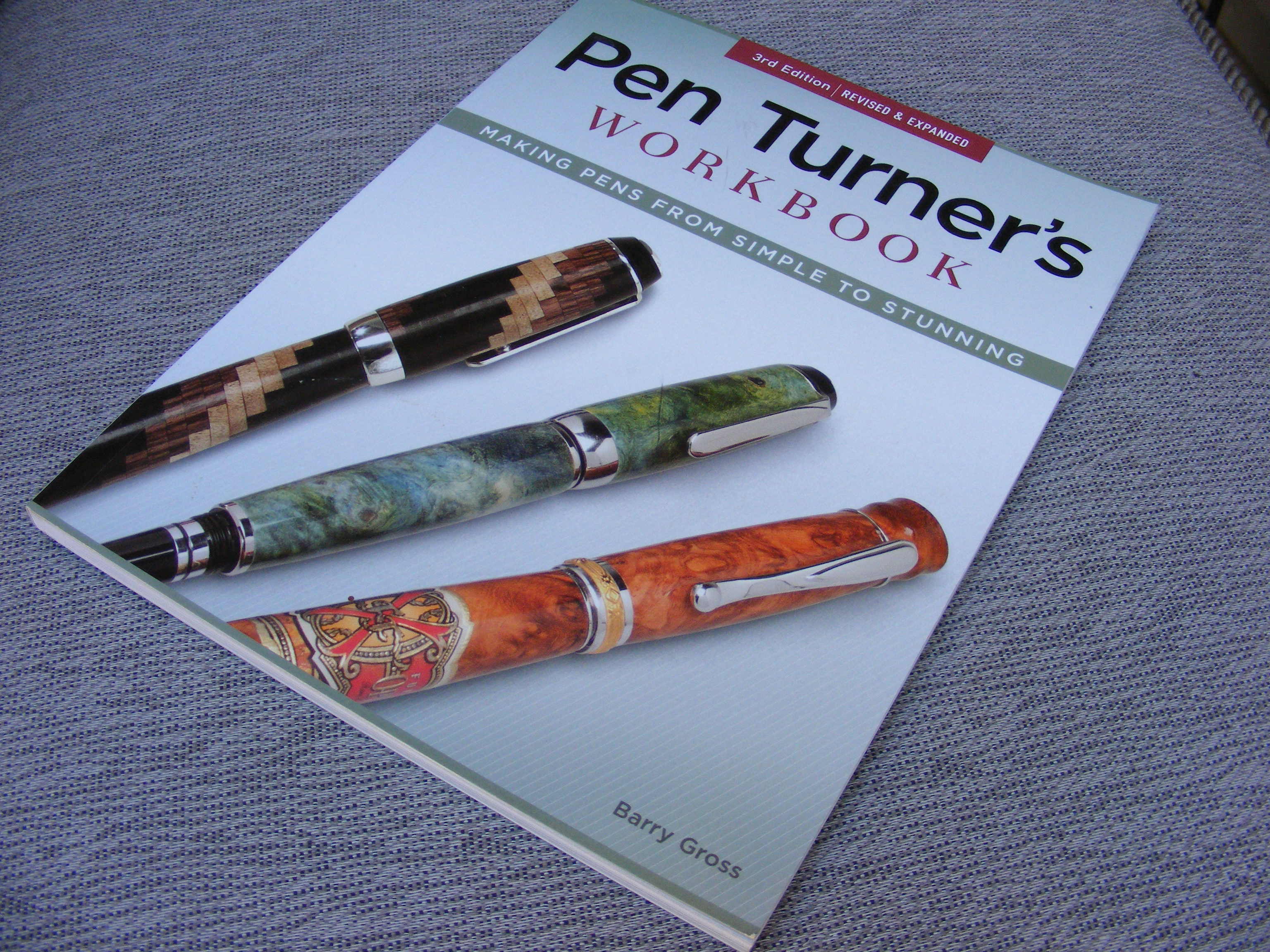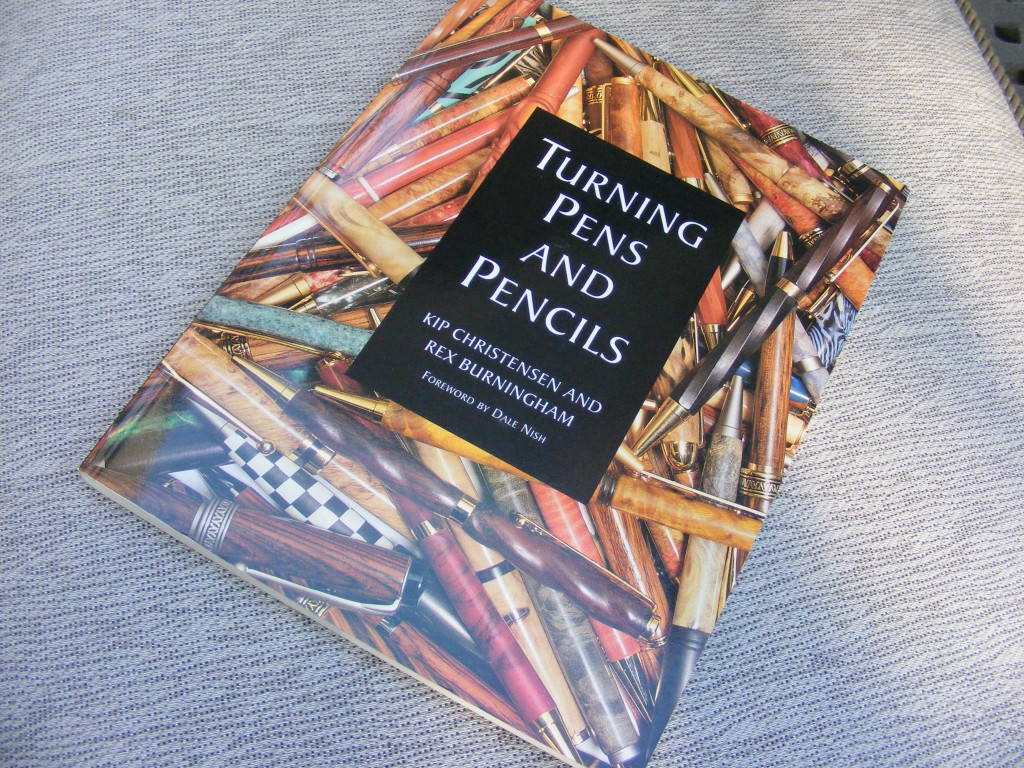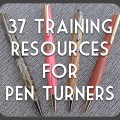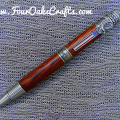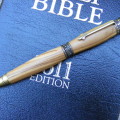If you are interested in learning about pen making, I highly recommend a couple of great pen turning books. I snapped a picture of these books out on my back patio. I did that on purpose because I want you to see that I really own these books. I didn’t just copy and paste a picture from Amazon and parrot someone else’s reviews. I’ve had both pen turning books for several years now. If you join a pen forum or group like IAP (International Association of Pen Turners) you’ll see these two books mentioned a lot.
You’re probably asking why go purchase a book on pen turning when there’s so much free information on the internet? And that’s very true, but when someone writes a book they put a huge amount of thought into the layout of the book and the quality of information. And to get a book published it has to go through a very stringent vetting process. Couple that with many good reviews, and you know you have two very authoritative books on pen turning.
When I first started the hobby of pen turning, I purchased Turning Pens And Pencils by Kip Christensen and Rex Burningham. The book is $16.11 and you can purchase through Amazon by the link I provided. I also have Kip’s and Rex’s DVD which is even better than the book.
Barry Gross is also well-known in the pen making community. I bought his book, Pen Turner’s Workbook and absolutely love the book. This book is $14.72 at Amazon. Just click on my link if you’d like to get a copy.
Out of the two books, I think Barry’s book is my favorite. But the books are very similar in content and layout. Here are topics common to both books:
- How to set up shop and get started.
- What tools and equipment you will need.
- Safety considerations and practices.
- The various materials used for pen making.
- The different pen kits available on the market.
- Pen plating.
- Turning techniques.
- Step-by-step instructions for making a pen.
Barry’s book also shows you how to cast your own pen blanks in acrylic, and he nicely illustrates other advanced pen-making techniques. He offers excellent examples of different style pens he has made which you can use to model your own pens. I particularly like his tutorials on making segmented pens.
Toward the end of both books you’ll find a chapter on marketing and selling pens. I’ve found their suggestions to be helpful in selling some of my own pens. One tip he shares that I practice regularly is carrying one of your best pens around with you so others can see your work. This often generates many pen sells on its own.
Overall, I believe both of these pen turning books would be a great addition to your woodworking library.
I’ll be sharing more woodworking book reviews in the near future, so please sign up for my blog. When you signup, you’ll get notifications on new articles and tutorials.
And if you want two more great resources I’ve created on pen turning, check out the links below:
Pen Turning Resources for Beginners
37 Training Resources for Pen Turners
